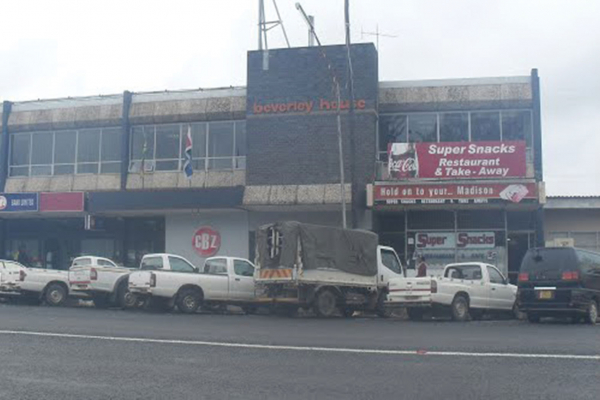
IT was around 9pm when travellers passing through Mashonaland West provincial capital, Chinhoyi, situated about 115km north-west of Harare found the town plunged in darkness.
BY NHAU MANGIRAZI
Darkness enveloped the entire town’s central business district, but there was glimmer of hope as barely 100m after passing through Chinhoyi University of Technology (CUT), the traffic lights at the intersection of Magamba Road were working and motorists moved with ease.
This has been the norm for the past four years, where solar-powered traffic lights have assisted in controlling traffic even during moments of power cuts.
The city’s engineering services director, Simon Marara, said they installed two solar powered traffic lights with assistance from CUT students three years ago.
“Council saw it fit to implement the government’s call to encourage use of abundant solar and see how best it can assist the communities. We saw it as a prudent move that would assist in controlling traffic within the central business centre as it was too busy,” he said.
CUT chairperson of the department of Fuels and Energy under the School of Engineering, Downmore Musademba, says the project is a “home-grown initiative” by students.
“We designed the solar traffic lights signal for Chinhoyi municipality and installed it for them. The first robot was done four years ago and we have since done the second one,” he said.
- Chamisa under fire over US$120K donation
- Mavhunga puts DeMbare into Chibuku quarterfinals
- Pension funds bet on Cabora Bassa oilfields
- Councils defy govt fire tender directive
Keep Reading
Musademba explained that when they were approached by council, the headache was about how to control traffic flow within the central business district.
“We had to do a self-sufficient system to allow filtering of traffic with much ease.
“We had to enhance it to compliment load shedding challenges as it has become a thing of the past for the town in terms of controlling traffic,” he added.
Musademba said the project proved to be a success story that saw them installing another robot.
“We are grateful that the local authority gave us trust and this home grown project has been a role model for other cities,” he said.
The biggest challenge, Musademba said, was having to rely on imports for critical projects.
“We cannot have modules of our own here and we have to rely on imports and this is a challenge that we think if managed solar system will be the cheapest mode of energy for the country, especially, using renewable energy as the benchmark,” he said.
Marara added that financially the town was serving hundreds of dollars.
“Of course, it seems to be expensive to get all gadgets at once, but when it is spread over a long time, this a cost cutting measure for us as we were paying $150 monthly for robots,” he said.
Chinhoyi town will have more solar powered street lights soon after passing central business district till you arrive at local hotel outside town.
“At least the town has seen it fit to use abundant solar system that is abundant in the country all year round. “Our government has failed to utilise the natural resources for the benefit of the nation. We must strive for multiple energy resources to compliment hydro-electricity system that has been used since the early 1960s,” truck driver, David Tembo said.
Tembo is among several long distance drivers that pass through Zimbabwe from South Africa to Democratic Republic of Congo (DRC).
Chinhoyi town clerk, Maxwell Kaitano, expressed confidence that all was well, adding that the solar powered robot system was good for motorists passing through the town.
“This is a highway town linking us with Zambia, DRC among other nations and we believe the initiative is paying dividends, as more towns are learning from us,” he said.
Zimbabwe is facing acute electricity generation shortfalls and calls have been made to make use of renewable energy to compliment Kariba hydro-power system at Zambezi River, as well as coal from Hwange among small projects on the national grid.
The Energy and Power Development ministry has a vision to achieve access to sustainable and modern energy in the country by 2030.
It looks forward to provide adequate and sustainable energy supply through formulating effective policies and regulatory framework.











